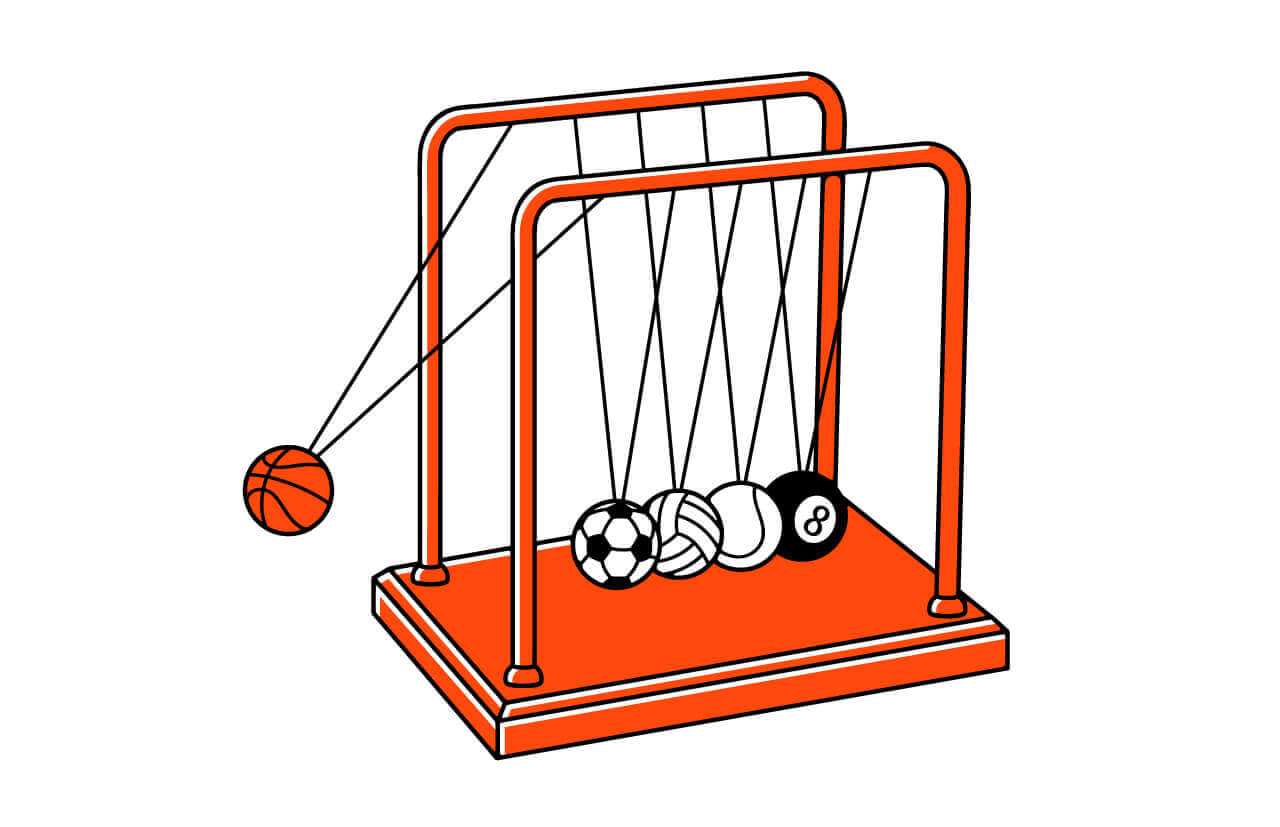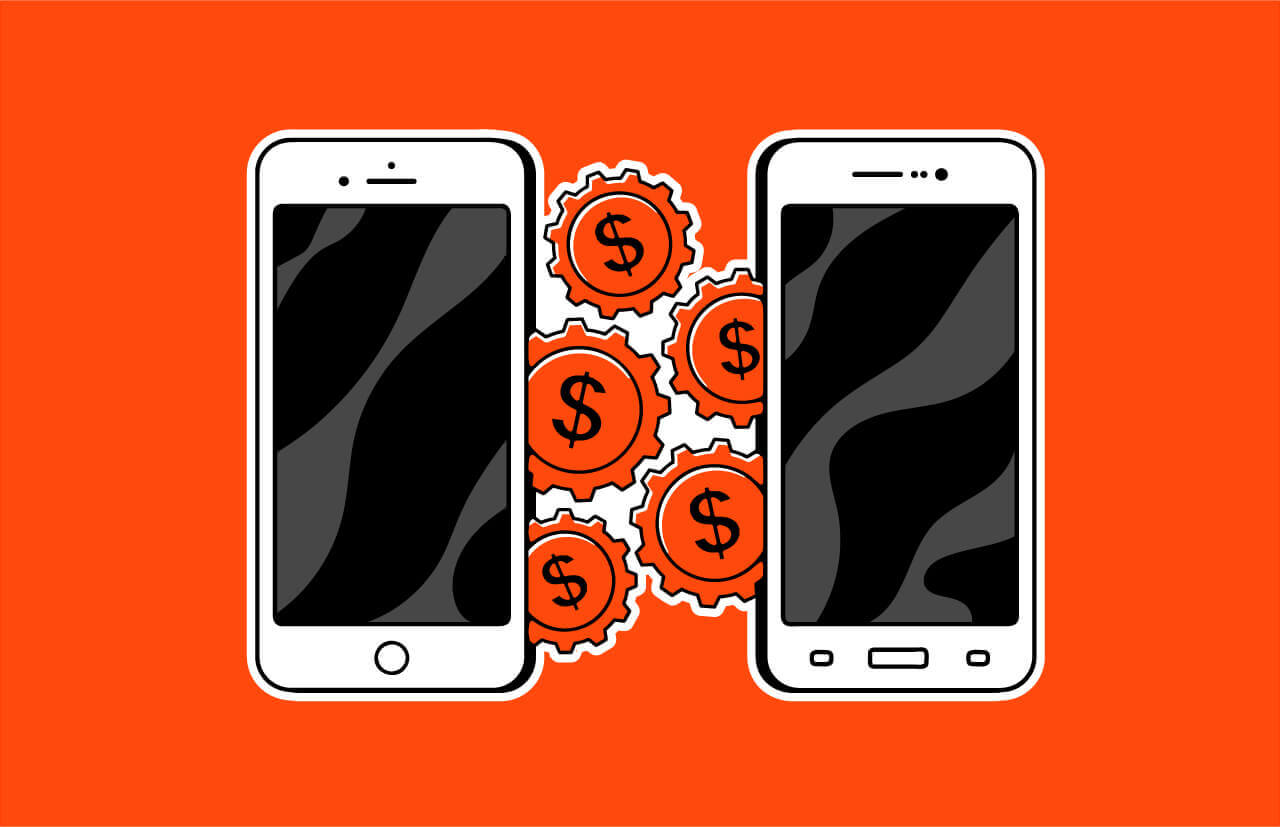Since 94% of website first-impressions are design-related, your web design can make or break your conversion efforts.
Whether you update small elements of your website or do a complete overhaul, website redesign requires time, effort, and money.
So, how do you know your investments won’t go to waste and if it’s actually time for a redesign? Watch out for these five red flags.
1. You can’t remember the last time you updated it
Some say you should redesign or update your website every 3-4 years, others say every 3-6 months, while yet others swear by weekly updates.
While there’s no one-size-fits-all answer to how often you should update your website, we’ll give you this.
Having closely monitored the competitors of the startups we work with, we’ve observed that startups after Series A update their website every 2-4 weeks on average. So, if you haven’t touched your website since as little as half a year, you’re already 9 cycles behind.
Understandably, not all companies may have the resources to update their website frequently. But whether you add a new blog post, optimize or refresh existing ones, add a new common question to your FAQ page or your latest testimonial—updating your website bi-weekly, or at least monthly, is a good practice.
It’s a way to keep your website up-to-date, improve its SEO, and show prospects and customers your business is alive and kicking, and you care about providing them with the latest information.
2. It’s outdated compared to your product offerings
If your product has evolved, but your landing page hasn’t, that’s a major red flag calling for a website redesign—and rightly so.
If you’ve added exciting new features to your product or expanded your offerings, not updating your website to spotlight them could be costing you precious business.
It can make customers turn to your competitors—whose websites reflect their full range of offerings better—simply because they aren’t aware you offer the same features.
So, a website redesign in this context helps inform customers about your latest roll-outs and prevent loss of sales. Besides this, it also helps build credibility as customers can understand exactly what to expect from your product.
Note: Not every new feature will merit changing the landing page, especially if you roll out new features quite often. The whole point is to update your website’s content regularly—whether it’s your blog, landing, or product page—so your customers can understand your offerings better.
Besides this, getting calls and inquiries for a product or service you no longer offer is also a sign that a website redesign may be in order.
3. It doesn’t reflect how you market your product
If you don’t use words from your website to describe, market, and sell your product, it’s time to change them. Because if they don’t appeal to you, they most likely don’t strike a chord with your audience either.
Or, think of it this way—instead of complex, industry jargon, why wouldn’t you want to use the words and phrases that help your salespeople convince and convert clients right on your website?
That’s the strategy we used when working with Realtify, a startup that analyzes the real estate market to help developers spot opportunities. We used the exact words their sales representatives used in meetings on their website, proving that sometimes, the solution lies within your organization.
Besides turning to your sales reps for help, you can also take cues from their or your customer service team’s interaction with prospects and customers. This will help you understand how your clients see and describe your product, and the pain points they were facing that led them to you—some very useful information to base your website around.

critical web design mistakes to avoid
4. You’re attracting the wrong customers
“If the wrong people are hitting your website, it's all for nothing,” says Paul Jarvis, an author, and designer whose work ranges from startups to Fortune 500 companies.
If your website’s attracting traffic, that’s great. But if it isn’t attracting your target audience, a redesign should be on the cards.
Here are some signs you’re attracting the wrong customers:
- You’re getting significant traffic, but the bounce rate is high, and visitor to lead conversion is low. In short, the traffic isn’t translating into leads or sales.
- You’re ranking well for specific terms, but they’re unrelated to your business.
- Visitors’ search bar queries and live chat sessions reveal they’re looking for products you don’t offer.
- You’re getting a significant amount of inquiries and calls, but from customers your business doesn’t serve.
When redesigning your website in this case, you’ll need to understand and analyze the keywords you’re ranking for, where the misunderstanding and gap arise, and then update your website content, headline, and metadata accordingly.
5. It doesn’t excite job seekers
A website isn’t just a tool to attract potential customers but also potential hires. It’s the first impression both these valuable users have of your business.
Imagine the impression you’d leave on job seekers if your website is all or some of the following:
- Difficult to navigate
- Not mobile-friendly
- Slow to load, heavy-looking
- Has a poor “About Us” section
- Has outdated content and visual designs
- Has vague, unappealing product descriptions
- Doesn’t match the language your colleagues use to describe your product or company.
This can make job seekers turn to your competitors—or at least think they’re one step ahead of you—who don’t only have a solid product but also a credible-looking website.
While you can’t know if and which job seekers left because of your website, what you can do is get your new joiners’ opinions on it. Ask them what they liked and didn’t about your website and how you fared compared to your competitors. This will give you a sense of whether your website needs work and how deep in the water you are.
Is it time for you to redesign your website?
When it comes to a website redesign, the question shouldn’t be “Is my website doing well?” but rather, “Can it do better?”
If you’ve encountered any of the red flags mentioned above, a redesign or a minor refresh might just be what you need to provide a better on-site experience to users and help your bottom line.
Do you think some of these signs sound like your problems? Let us know.
Also, subscribe to hear about legendary business pivots on our CTRL SHIFT podcast.





